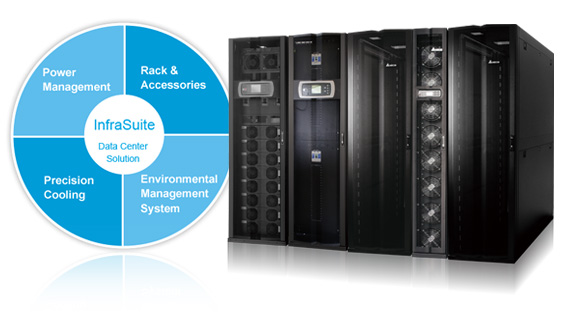In 2013 Gartner forecasted that the production value of datacenters worldwide would increase from US$102.4 billion in 2014 to US$118.1 billion in 2017 with a CAGR of 4%. One of the strong driving factors behind such datacenter growth is the phenomenon called “Big Data”. Regarded as one of the most confusing high tech buzzwords of 2013, what on earth is “Big Data”? According to the definition by Gartner, it is “high-volume, high-velocity and high-variety information assets that demand cost-effective, innovative forms of information processing for enhanced insight and decision making.”
- High volume
The volume of data, based on IDC analytics, will increase by 50% every year, which means the size of data will double biannually. How to store and process the boom in data is a huge challenge.
- High velocity
Data must be obtained and analyzed in time to achieve the maximized value for market trend projections.
- High variety
Data can be structured, unstructured, text, or multimedia.
Datacenter infrastructure is the backbone of business operations in the era of Big Data. The adaptability of UPS and datacenter design is crucial for an enterprise to sustain its competitiveness and grasp market opportunities in a timely manner. The ideal datacenter design concepts to meet growing market demand for data are standardization and modularity.
Modular UPSs scalable to growing data volume
Engineered with cutting-edge design, the Delta Modulon DPH series is a fully modular UPS that provides seamless scalability for both vertical and horizontal expansion. Key components such as power modules, control modules and STS modules are designed for “plug-and-play” modularity. To meet the flexible demands of medium and small enterprises, the DPH series offers three kinds of cabinets with power ratings of 75/150/200kW and optional features such as a rack-mounted PDC and built-in batteries within a single rack. Enterprises can realize a “pay-as-you-go” strategy without hardware over-sizing and wasting valuable investment in the initial phase of their business operations.
▲ The availability of DPH 75kW and DPH 150kW is subjected to confirmation with Delta local sales.
Green power for OPEX minimization
In addition to high scalability, “going green” is another must for modern datacenters in the data boom generation. Energy-efficient UPS designs with high efficiency, fully-rated power (kVA=kW) and low iTHD can help datacenters save huge amounts of operation expenses (OPEX). Since the typical load range of datacenters is around 30%, it makes business sense to achieve high performance at light loads rather than at full loads. With Delta's engineering excellence, the DPH series UPS can reach 95% AC-AC efficiency even at 30% light loads and flat at 96% with over 50% loads.
Datacenter Modularity Realizes Seamless Scalability
In addition to UPSs, other datacenter infrastructure such as cooling, racks, PDCs and PDUs, can also play a crucial role in making seamless datacenter expansion possible. Delta InfraSuite, the datacenter total solution, features an integrated structure and modular system design. Again, when facing the growth of data volume, datacenters can expand in scale by gradually adding incremental hardware. No over-sizing is required.

As data volume grows there is a higher and higher demand for server performance. Higher power density per rack becomes an inevitable trend, which leads to hot spots in the server room. To solve this issue, RowCool can be directly located next to hot racks for efficient heat removal and equipment reliability without overheating. When more data needs to be accommodated, modular racks, breakers for PDCs and PDUs, can also be added according to demands. Last but not least, no matter the scale of datacenters, the environment and information can be centrally controlled and monitored via InfraSuite Manager for comprehensive data center management.